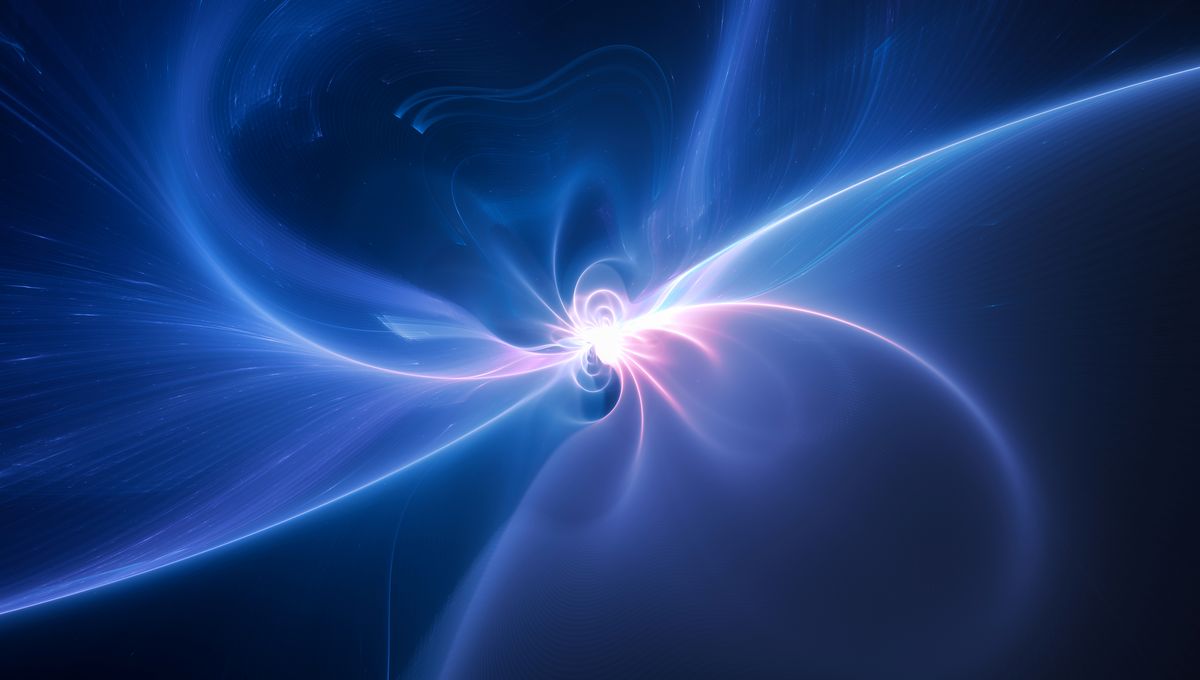
Radio astronomers have detected radio pulses from a source that appears to send a signal in our direction every 14 minutes, although we’ve only captured a tiny fraction of those since it was found. While several radio sources have been found on similar cycles in recent years, this one stands out for the extreme polarization of its signal and the fact that it’s speeding up.
The signal has been named CHIME J1634+44, and despite membership of the category known as Long-Period Radio Transients (LPRTs), it’s not like anything we have seen before.
Until a few years ago, astronomers thought the radio waves they detected from space were either permanent sources, one-off outbursts, or pulses that reoccurred every few seconds or milliseconds (pulsars). Regular sources with longer periods than that all turned out to be of human origin. Then Professor Natasha Hurley-Walker of Curtin University discovered records of a source that was putting out a signal every 1,091 seconds, a period thought to be impossibly long for a pulsar.
The signal was designated a Long-Period Radio Transient, and the search was on to find others. Ten more examples have been spotted, and in two cases, we have an explanation: red and white dwarfs locked in tight orbits. However, no sooner than the mystery seemed to have been solved than other examples were found that don’t fit, for example, by being seen in X-rays as well, although none as badly as CHIME J1634+44.
CHIME J1634+44 was found by the Canadian Hydrogen Intensity Mapping Experiment (CHIME) while conducting a search for pulsars, and independently in data from the LOFAR Sky Survey. The signal was first noticed in October 2022, but involved only one outburst at that time. However, it has reactivated sporadically since then, such that 89 bursts have been detected in the course of more than 4 years, sometimes in multiples close enough together to establish the timing.
This newly discovered LPRT is located in the constellation Hercules, and unlike most previous members of this group, it isn’t in a crowded part of the Milky Way. This ought to make it easier to find the source at other wavelengths, since this part of the sky should be less crowded. However, the only optical candidate that seems to match locations isn’t considered a promising source.
In most cases, signals are detected every 4,206 seconds (70 minutes); however, sometimes just 841 seconds lie (14 minutes) between. The discoverers interpret this as an 841-second cycle, with many of the pulses either too weak for detection, or slightly misdirected, so that only every fifth one is reliably received.
At least some LPRTs appear to come from star systems where a red and white dwarf star orbit each other on timelines that match the period between pulses. Although we don’t fully understand the cause of the radio emissions – or even which star is responsible – it makes sense that two stars so close together would influence each other. The preferred theory is that a constant radio emission sweeps across the sky like a lighthouse or a pulsar. However, the period is dictated by the time for the pair to orbit, rather than a single object’s spin, allowing a cycle much slower than a pulsar.
However, in CHIME J1634+44’s case we have not only failed to find any sign of a main sequence star that could be part of this dance, the signal is almost 100 percent circularly polarized and speeding up.
Light becomes circularly polarized when emitted in a powerful magnetic field, but normally this only applies to a portion of the photons detected. Near 100 percent polarization is hard to explain.
The only times we have seen such polarized pulses, a paper on CHIME J1634+44 notes, have been from brief outbursts from relatively nearby stars (including the Sun). In every case, the flux was a thousand times or more lower than would be necessary to make CHIME J1634+44’s signal. “It is thus unlikely that CHIME J1634+44 shares the same underlying emission mechanisms as any of these objects,” the authors note with scientific restraint. The closest they can get is to note some rare pulsars that have extreme polarization.
Possibly stranger still is that the time between pulses appears to be shrinking ever so slightly, indicating that the source is speeding up. It’s the first long-period transient where this has been observed clearly, although one previous example has a possible speed up that currently can’t be distinguished from noise.
The authors speculate that material from a binary companion might be falling on the white dwarf or neutron star that is the most likely source of the radiation, adding to the source’s angular momentum. Alternatively, two white dwarfs may be in orbit around each other, decaying thanks to the release of gravitational waves we have yet to detect.
The study has been accepted for publication in The Astrophysical Journal Letters, and a preprint version is posted to arXiv.
[H/T: Phys.org]
Source Link: Long-Period Radio Transient Signals Puzzle Astronomers – One That’s Speeding Up May Be The Strangest Yet